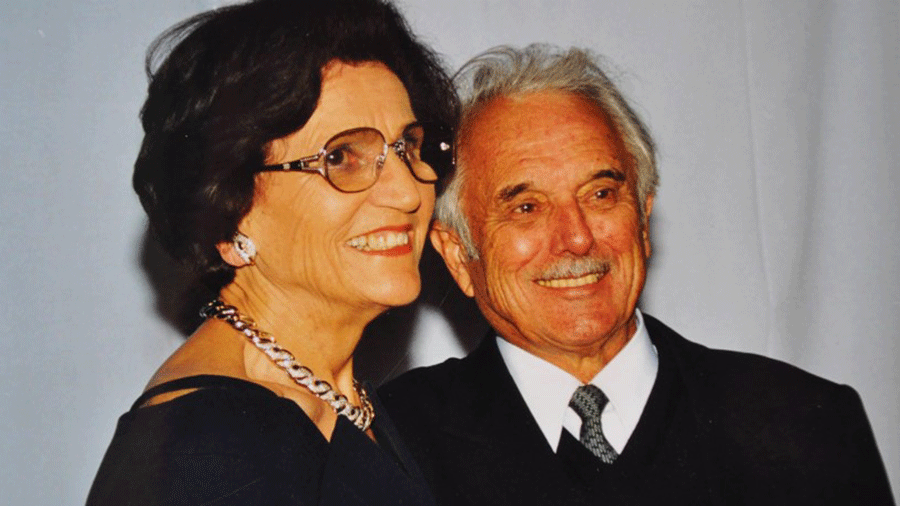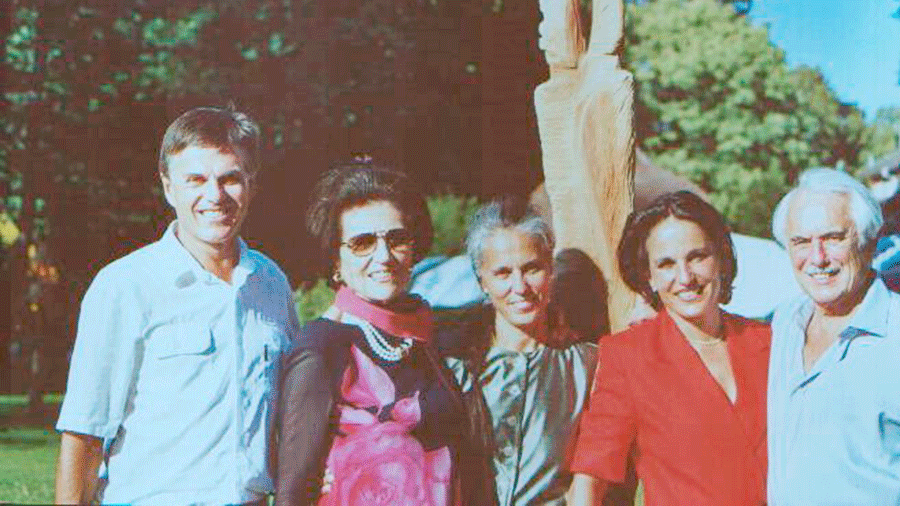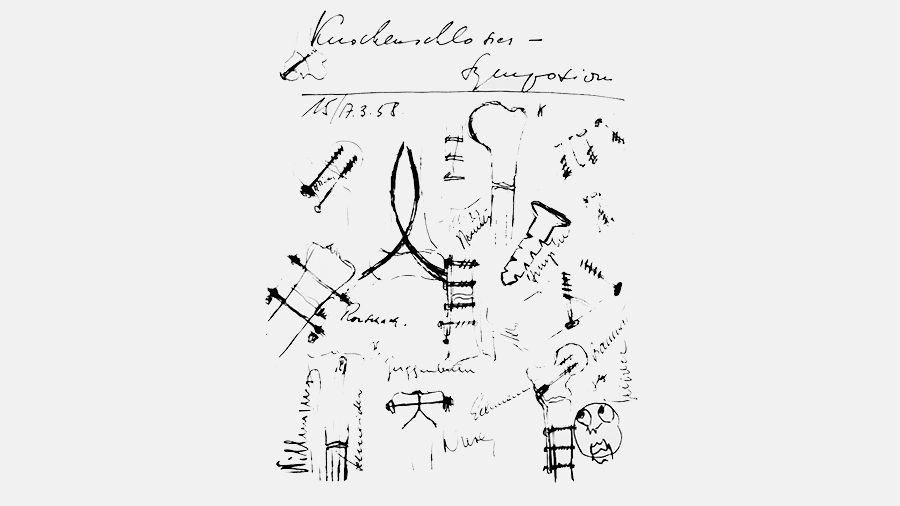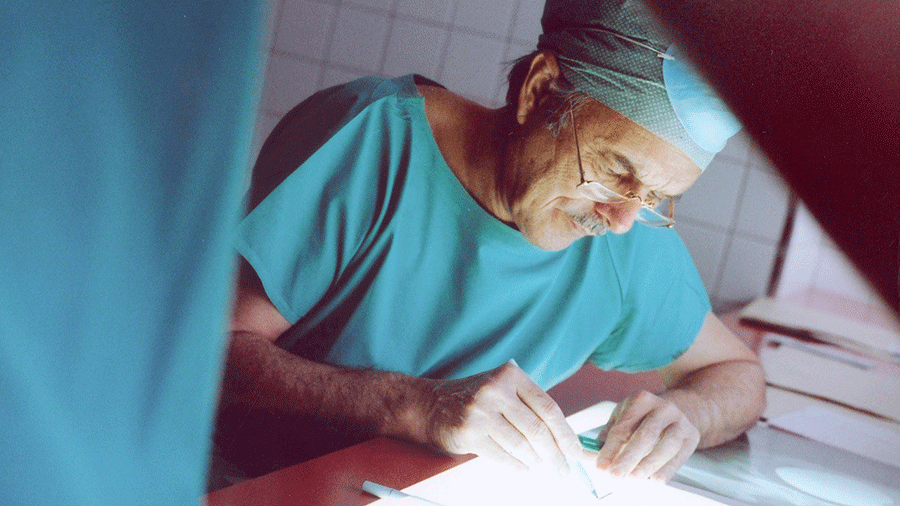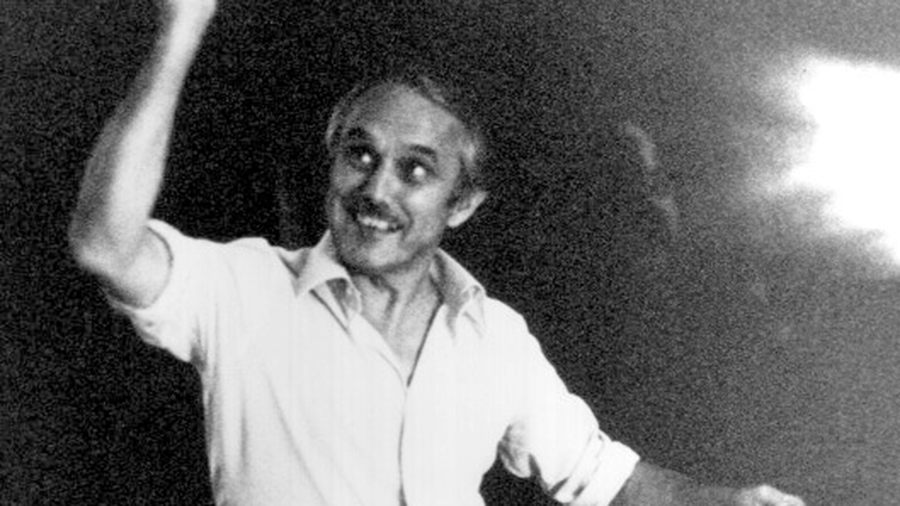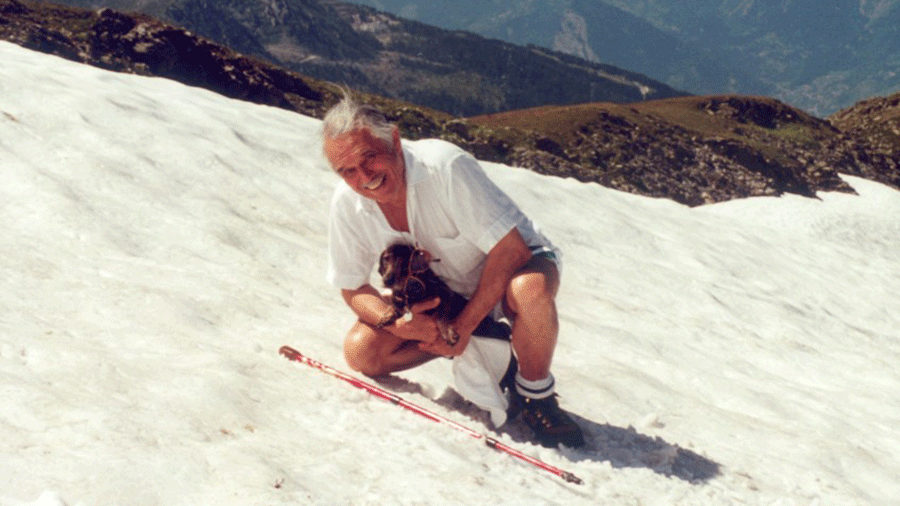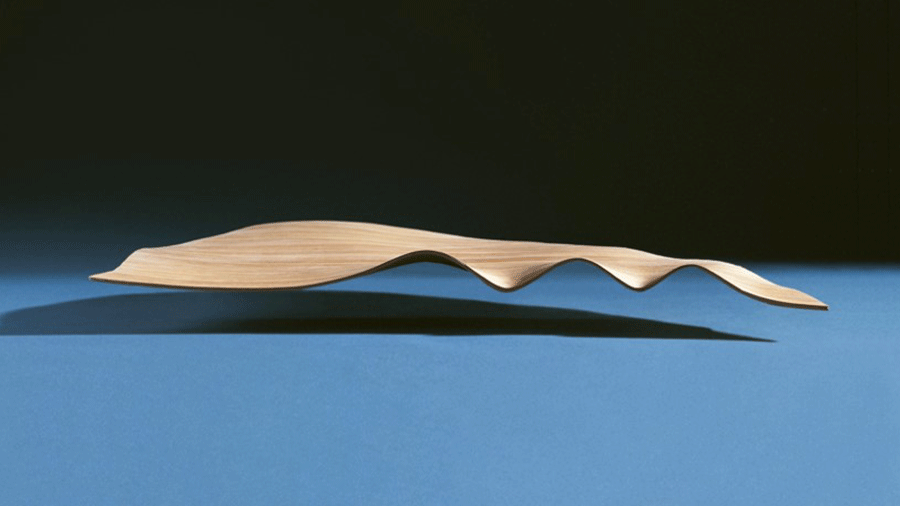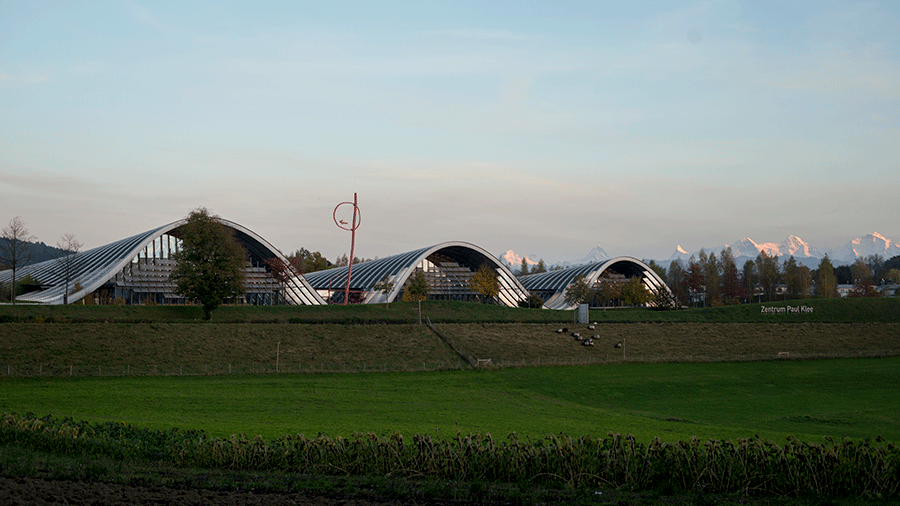A daughter reflects on her father, Maurice Edmond Müller: An interview with Janine Aebi-Müller
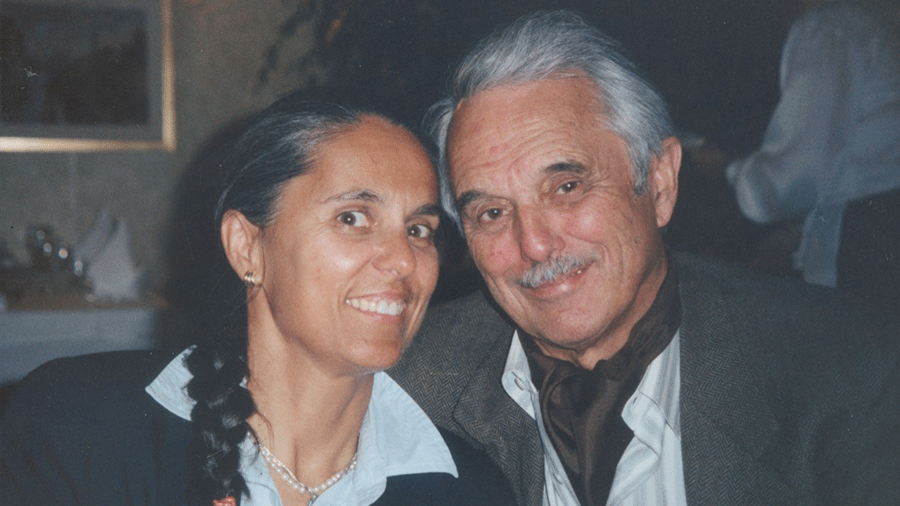
Maurice E Müller with his daughter Janine.
By: Vidula Bhoyroo, Project Manager/Medical Writer, AO Education Institute
Janine Aebi-Müller is one of the three children of Maurice E and Martha Müller. With great pride and respect, she keeps her father's legacy alive. Janine was the vice-president of the Maurice E and Martha Müller Foundation (MMMF), which was responsible for the construction of the multidisciplinary Zentrum Paul Klee (ZPK). When MMMF merged with the Stiftung Zentrum Paul Klee, she was also a member of the ZPK Foundation. Today the ZPK Foundation and the Kunstmuseum Bern work together on the same foundation board where Janine Aebi represents the Müller family. In the Fondation du Musée des Enfants auprès du Centre Paul Klee, Janine launched the children's museum CREAVIVA. She has held the presidency for more than 16 years. Janine Aebi is also involved with the Maurice Edmond Müller (MEM) Archive at the University of Bern.
What was it like growing up as the daughter of the world-renowned surgeon, Professor Maurice Edmond Müller? And how was he as a father?
Our father was a great person who touched many lives with his way of being, of living, of thinking, and of working, and who shaped us and captivated us again and again. Describing him as a daughter, I will say this: unpretentiousness and modesty with a big heart for human beings.
Loving, giving, and helping people was his life. And he lived with an iron discipline. Thinking about what was appropriate and right, he put it into rules and then strictly adhered to them.
Our mother and we the children had no central place in his life. We always had to show understanding, which was often painful. But when dad spent time with us, it was always intensively used, it was quality time. He was a passionate skier. No slope was too steep for him to pilot us down. As a "mountain man," no rock was too high nor too threatening for him to climb, rope down, or hike for hours. There were also quieter activities like playing ping-pong and chess, learning French philosophy, and history.How did he remain dedicated to his vocation?
My father considered his life as a message. Being a surgeon was his vocation, his life’s work a passion. He committed himself to his visions. They were his incentives and guidance in facing the challenges he met in life. He loved taking risks. He always said, "No success without risks.” He often fought against the tide with willpower and energy, but he had perseverance and the greatest personal discipline. He believed in himself. He was able to realize his visions with his optimism and fire of enthusiasm, with which he infected and captivated his environment.
What were his visions?
In medicine, his goals were:
- Better quality of life, ie, less pain and more mobility
- Faster recovery, shorter incapacity for work
- Lower insurance costs
The 1950s was a time of developing a new system of implants and instruments for the operative treatment of fractures as well as instructional courses. In 1958, he founded the Arbeitsgemeinschaft für Osteosynthesefragen with his friends, Robert Schneider, Martin Allgöwer, Hans Willenegger, and Walter Bandi. It was based on four pillars: instrumentation, research, teaching, and documentation. He was the genius and spiritual father of the AO.
From all the achievements of MEM, what stands out for you?
As a "social entrepreneur," he gave financial support to many societies, including the AO, Synthes USA, etc, when it was for the cause and not for personal gain: he also offered financial help to individual orthopedic surgeons who wanted to contribute to improving the world.
And as our father he has passed on to us his rules of life, which illuminated his own life philosophy of the responsibility of the favored, the successful, the special.
What are some of the rules of life that he implemented to manifest that single-pointed focus.
My father not only set rules but he also was the first who lived by these rules. Examples:
Rule 1: "Give the world your best. But don't be surprised if you get slaps in the face instead of gratitude. Nevertheless, always do your best."
Rule 2: "He who is crowned with success wins false friends and real enemies. Strive for success nevertheless."
Rule 3: "The greatest with the best ideas can be destroyed by the petty. Still, be great and have the best ideas."
Rule 4: "People are often unreasonable, illogical, and self-centered." Again, he added his typical reflection, "Love people anyway."
He gave us, his children, the message and confidence to take responsibility for ourselves and to take responsibility for and help other human beings and our society early in our lives.Maurice Müller started a company and even some foundations. Can you tell us a bit more about them?
He found the Arbeitsgemeinschaft für Osteosynthesfragen together with like-minded friends in 1958, after he had developed a new instrumentation with Robert Mathys in less than two years. The pillars of this cooperation were instrumentation, research, teaching, and documentation. He gave all the revenues from his intellectual property—patents, instruments, and implants that he developed—to Synthes AG Chur. My father was never interested in money per se, he never personally enriched himself. He always fought for a cause and cultivated long-term, avant-garde thinking. Reinvesting profits in research, teaching, and evaluation was more important for him.
In the early 1960s, the first hip implants were developed along with the necessary corresponding instrumentation, and in 1965 he founded Protek AG. He dedicated all the royalties to a nonprofit foundation: Foundation Maurice E. Müller for Continuing Education, Research and Documentation in Orthopaedic Surgery.
The institutes that were founded and financed by Foundation Maurice E. Müller were:
- M. E. Müller Institute for Structural Biology, Biozentrum, University of Basel
- Institute for Evaluative Research in Orthopaedic Surgery, University of Bern
- Institute for Surgery Technology and Biomechanics, University of Bern
With his foundation, my father also established foundations in Spain and North America, and endowed chairs and programs all over the world.
What was the major project your father had in mind, and for which he had put aside the money he received after selling off Protek?
When he sold Protek AG to Sulzer in 1991, he said: "I did not earn this money with my hands. Therefore, I wish to do something for society with it." He was on the lookout for new challenges after retiring from his medical profession. What he then took up was no less than the realization of a utopia─a dream of a fundamentally different kind of museum, a multidisciplinary center called Zentrum Paul Klee (ZPK). As the proceeds from the sale were not sufficient to build the ZPK, he additionally donated a larger part of the family assets.
Paul Klee and my father both had dreams and visions and, above all, the gift of turning them into reality, into works of art, or orthopedic medicine. [Paul Klee was an artist, whose Paul Klee Notebooks are believed to be as crucial for modern art as Leonardo da Vinci's A Treatise on Painting was for the Renaissance.] My father and Paul Klee left nothing to chance. They both documented their steps in their work. They were true to themselves and demanded the most from themselves. Both changed their world in the process. According to my father's visions, the Zentrum Paul Klee in Bern as a cultural center should be a place of enrichment that fascinates and never lets you go: a place that wants you to come back, again and again, to discover a new secret so that you can go home even more enriched.
On a global scale your father with his entrepreneurial thinking and actions revolutionized the treatment of fractures as well as hip disorders. How do you want the world to remember him?
“We do not live in order to become rich but to create something that would otherwise never have come into existence without our efforts," my father used to tell us. I think the world should remember him for that.
You might also be interested in:
- Reading more AO history stories
- Learning about the AO archive and history project
- Viewing the AO image collection
- Searching our online AO library catalog


